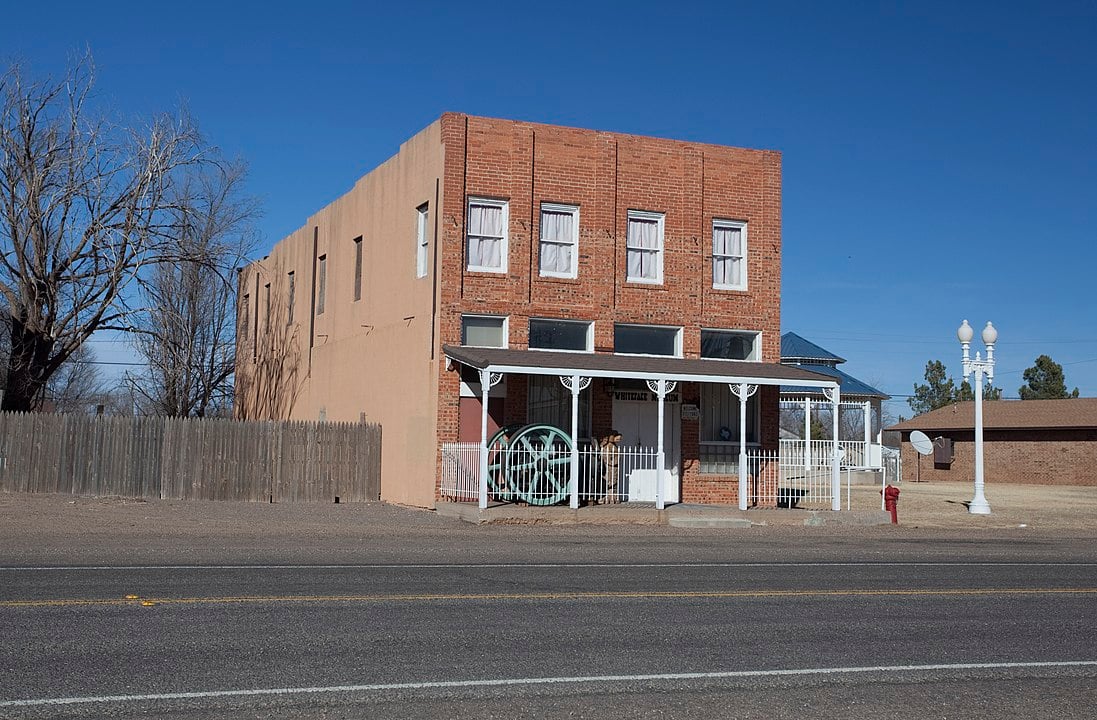Whiteface

Whiteface, Texas
Whiteface is on State Highway 114 forty-five miles west of Lubbock in east central Cochran County. The name of the town came from rancher C. C. Slaughter's Whiteface Camp and Whiteface Pasture, which were named in turn for the cattle on his ranch. In 1924 Ira P. DeLoach staked off the townsite four or five miles southwest of the site of present Pettit in Hockley County, and in September he held a barbecue to help sell farmlands and town lots. A lumberyard was established by the Clem brothers, a grocery store was built by a Mr. Guthrie, a small hotel was established, and a two-room frame schoolhouse was built. In 1925 Whiteface residents moved their town some four or five miles southwest to be on the South Plains and Santa Fe Railway, which was then being completed from Lubbock to Bledsoe. The new townsite was originally the ranch headquarters of J. C. Whaley, who donated land for the town. Because the well at the location made a convenient railroad stop, the company built a depot and provided houses for its agent and foreman. In 1925 C. W. Word brought his family to the settlement, where they lived in a tent and furnished meals for the railroad workers. Whaley built a one-room schoolhouse that was ready in time for the fall semester in 1925. Later in the year the Whiteface-Lehman Common School District voted a $60,000 bond to build a brick school building in each community. Word established a post office on December 15, 1925, with Mrs. Word as postmistress. A paved road from Levelland to Whiteface, completed in 1928, contributed to the prosperity of the community. In 1937 oil was discovered in the Slaughter fields south of the town. Whiteface reached its peak population in 1941, with an estimated 600 residents. The town was incorporated in 1945, and the following year a road was paved from the town to the Mid-Continent Petroleum Corporation fields, nine miles south. In 1947 a brick high school was built. In July 1949 Miss Amelia Anthony moved the nine girls of Girlstown, U.S.A., a home for unfortunate girls, from Buffalo Gap, Texas, to Whiteface. Both oil and farming contribute to the Whiteface economy. In addition, several large ranches lie outside the city limits. The town's population declined during the 1950s and 1960s, and by 1978 it was estimated at 365 residents. In 1980 it had increased to 463. The Santa Fe Railroad line through the town was abandoned late in 1983. In 1990 the population was 512. The population dropped to 465 in 2000.
H. Allen Anderson | © TSHA

Adapted from the official Handbook of Texas, a state encyclopedia developed by Texas State Historical Association (TSHA). It is an authoritative source of trusted historical records.

- ✅ Adoption Status:
Belongs to
Whiteface is part of or belongs to the following places:
Currently Exists
Yes
Place type
Whiteface is classified as a Town
Location
Latitude: 33.59956220Longitude: -102.61337000
Has Post Office
Yes
Is Incorporated
Yes
Population Count, 2021 View more »
371
